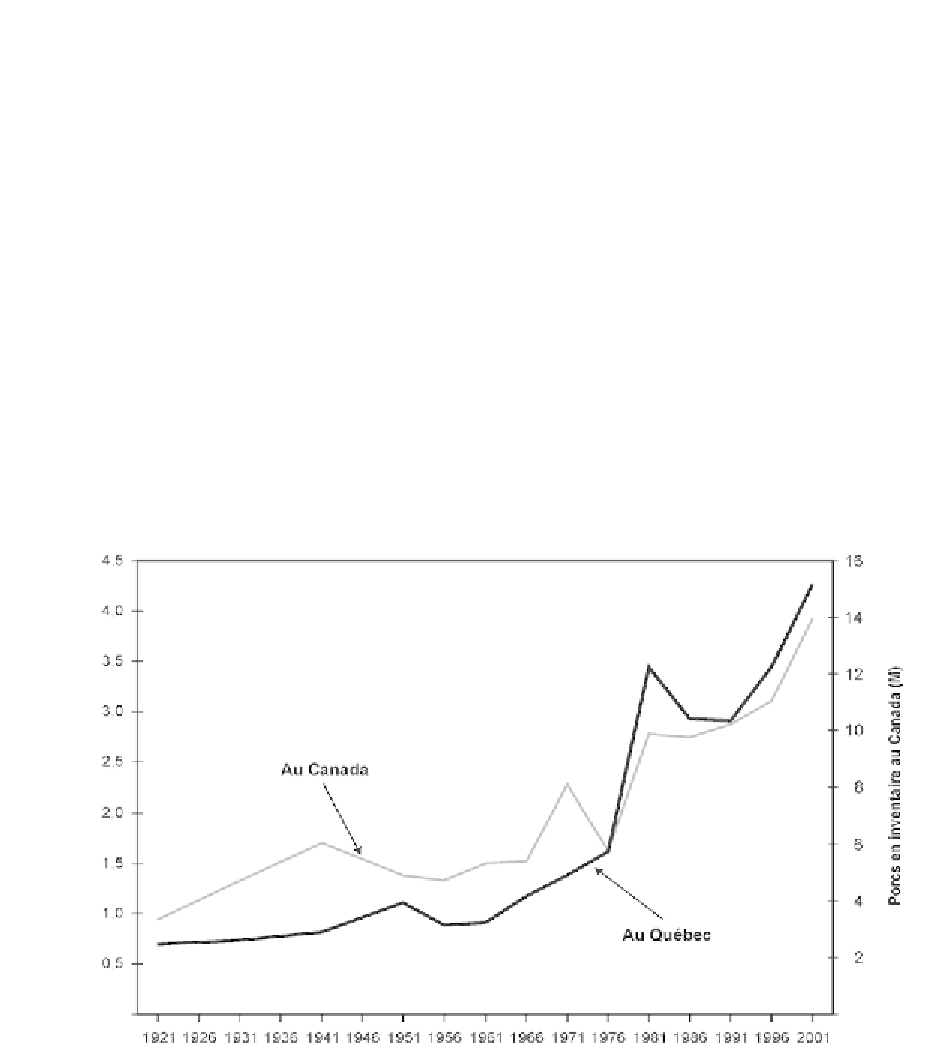Agriculture Reference
In-Depth Information
This agricultural strategy, together with the other measures comprising the RRAO, is
expected to provide better control of point and non-point sources of agricultural pollution,
improve the quality of water and aquatic ecosystems, increase the overall effectiveness of
environmental measures for the agricultural sector, and enhance consistency in
government policy through the introduction of cross-compliance.
The hearings on the sustainable development of hog farming
Hog sector expansion: a cause for growing public concern
Over the last four decades, the hog industry has undergone tremendous growth in
Québec, with the number of animals more than quadrupling since the early sixties
(Figure 1). Even though Québec only accounts for 5% of total farmland in Canada,
Québec farmers raised about 30% of all hogs produced in the country in 2002. Moreover,
hog raising in the province is very much concentrated in a few geographic areas (three-
quarters of all animals are raised in only three regions), a phenomenon similar to that
observed in other parts of the world in recent decades (OECD, 2003a).
Figure 1. Evolution of hog raising in Québec and Canada
Canada
Québec
Source:
Adapted from Statistics Canada, 1997 and 2002 (in BAPE, 2003)
The international market has been a major factor driving expansion, with half of the
province's hog production now exported. However, this growth has also contributed to a
significant increase in pressure on natural resources from farming activities and raised
serious public concerns about the environmental impacts of hog farming, especially
regarding water pollution and odour issues (MENV, 2003).



Search WWH ::

Custom Search